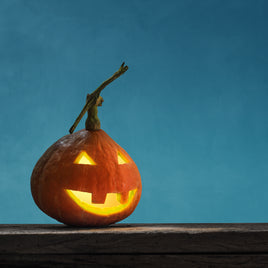- Feasting: A Celebration of Abundance
- Offerings: Honoring Ancestors and Spirits
- Modern Feasting and Offerings
Feasting and offerings are integral components of Samhain, embodying the spirit of gratitude, abundance, and connection with both the living and the dead. These traditions have deep roots in ancient harvest festivals and spiritual practices, marking the end of the agricultural year. Samhain, as the final harvest festival, was a time to give thanks for the bounty of the earth and to prepare for the long, dark winter ahead. Here’s a more detailed look at the significance and rituals associated with feasting and offerings during Samhain:
Feasting: A Celebration of Abundance
Samhain marks the last of the three harvest festivals (the others being Lammas and Mabon), so it naturally became a time of feasting and sharing the fruits of the final harvest. In the ancient world, the successful gathering and storage of crops like grains, root vegetables, and meats meant survival through winter. Samhain feasts were a way to celebrate the abundance of the harvest, but they also carried a deeper spiritual meaning.
-
Communal Feasts: In many Celtic and pagan traditions, Samhain feasts were communal events, bringing together families, friends, and entire villages. These gatherings strengthened social bonds during a time when the community would soon face the isolation of winter. The feast symbolized unity, cooperation, and the sharing of resources, ensuring that everyone would survive the cold months ahead.
-
Seasonal Foods: The foods served at Samhain feasts were usually made from the final harvest and preserved goods. Common ingredients included:
- Root vegetables like potatoes, carrots, and turnips.
- Grains such as bread, cakes, and porridge made from barley or oats.
- Apples and nuts, as they were seen as sacred fruits of the harvest.
- Meat, particularly pork, lamb, or beef, as Samhain was also a time when livestock was slaughtered in preparation for winter storage. These hearty, nourishing foods symbolized the earth's last gifts before it entered its dormant winter phase.
-
Symbolism of the Feast: The act of feasting symbolized not just physical nourishment, but spiritual sustenance as well. The Samhain meal was a time to honor both the living and the dead, acknowledging the cycles of life, death, and rebirth. Food was seen as a direct gift from the gods and spirits, and sharing this abundance reflected a deep connection to nature and the divine forces that governed it.
Offerings: Honoring Ancestors and Spirits
In addition to feasting, offerings played a central role in Samhain observances. As the veil between the worlds of the living and the dead was believed to be at its thinnest during Samhain, this was a prime opportunity to honor the spirits of ancestors, deceased loved ones, and deities.
-
Offerings for Ancestors: Samhain is often described as a time to "welcome the dead home." Families would set aside a place for their departed relatives at the table or even leave out an entire meal for them. This gesture acknowledged the presence of the ancestors, who were believed to return to visit during Samhain. Common offerings included:
- Portions of the feast: A plate of food was left at the table, in front of a family altar, or outside the home for wandering spirits.
- Drinks: Ale, wine, milk, or even water were left for ancestors, symbolizing hospitality and respect.
- Bread and cakes: Specially baked bread or cakes were often given as offerings, such as "soul cakes," which later influenced the Halloween tradition of trick-or-treating.
-
The Dumb Supper: A specific Samhain tradition known as the Dumb Supper was a solemn, silent meal held to honor the dead. During this ritual, participants would sit in silence while eating, setting an empty chair and place setting for their deceased loved ones. The silence was a sign of respect, allowing participants to reflect on their ancestors' presence and possibly receive spiritual messages. Food from this meal was offered to the spirits, either placed outside after the meal or burned in the hearth.
-
Offerings to the Gods and Spirits of Nature: In addition to honoring ancestors, Samhain was a time to make offerings to the gods, goddesses, and the spirits of nature who played a role in the cycle of life and death. These offerings were acts of gratitude for the harvest and requests for protection during the harsh winter months. Common offerings included:
- Fruits, vegetables, and grains from the harvest, which were left on altars, buried in the ground, or burned in bonfires.
- Meat or bread, often sacrificed as a token of thanks to deities or nature spirits, ensuring their continued blessing and support.
- Personal tokens or hand-crafted items, such as candles, jewelry, or art, offered as gifts to the gods.
- Food left outdoors for the wandering spirits and fairies, particularly on doorsteps or at crossroads, where it was believed that the spirits traveled.
-
Bonfire Offerings: A common practice during Samhain bonfire rituals involved throwing offerings into the fire. These might include harvested grains, pieces of bread, or symbolic items representing hopes, dreams, or intentions for the coming year. As the flames consumed these offerings, participants believed their prayers or wishes would be carried to the spiritual realm, where they would be answered or blessed by the gods.
-
Release and Renewal through Offerings: Beyond simply giving thanks, Samhain offerings also had a transformative purpose. People would write down things they wanted to release—such as negative emotions, past mistakes, or unhealthy habits—on pieces of paper, which were then burned in the fire or left as offerings. This was symbolic of clearing away the old to make room for new beginnings in the coming year. It allowed individuals to enter the dark season with a sense of renewal, unburdened by past difficulties.
Modern Feasting and Offerings
While the historical and cultural contexts have evolved, many modern pagans and Wiccans continue to observe Samhain with feasting and offerings, both to connect with the ancient rhythms of the earth and to honor their personal spiritual practices.
- Seasonal Samhain feasts today often include the same harvest ingredients, focusing on locally sourced and seasonal foods. Apples, pumpkin dishes, root vegetable stews, and hearty breads still feature prominently.
- Ancestor altars are still created, adorned with photos, mementos, and offerings such as food, candles, and incense.
- Modern rituals include activities like leaving out special treats for the dead, lighting a bonfire, or participating in a quiet meal with close friends and family, incorporating elements of the Dumb Supper.
Whether a large communal gathering or a quiet personal ritual, the essence of Samhain feasting and offerings remains the same: a celebration of the cycles of life and death, and an opportunity to express gratitude, honor the past, and prepare for the future.






